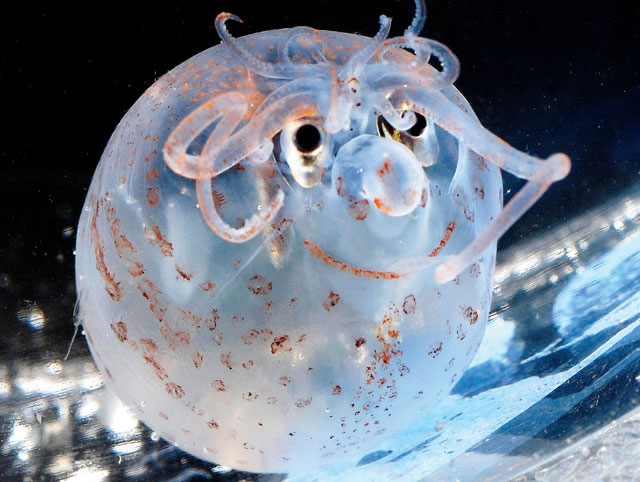sierraclub.org - sierra magazine - march/april 2013 - world's cutest squid?
Right-wingers Gang Up on Clean Energy | World's Cutest Squid? | Next Big Thing: Invasive Weeds? |
The Wind Is Red | On the One Hand. . . | Woe Is Us | Up to Speed
Critter: World's Cutest Squid?
Life imitates cartoons

Caters News Agency (Cabrillo Marine Aquarium/Gary Florin)
Squid suffer from poor PR. Despite tasting very nice when breaded and deep-fried, they have a reputation for grossness, likely due to their association with the word "mucilaginous." But help is at hand, thanks to the human genius for anthropomorphizing nature, in the form of Helicocranchia pfefferi. A row of chromatophores, or pigment organs, located beneath the squid's distinctive siphon (for filling itself with water, breathing, and propulsion) combine with an unruly tuft of tentacles to make us see it as the "piglet squid," its common name.
Beyond its resemblance to a bathtub toy, little is known about Helicocranchia. Here's most of what is: It inhabits a zone about 1,500 feet below the surface of most of the world's oceans, where it's so dark that the creature needs light-producing organs-called photophores-behind its eyes. It remains buoyant by regulating the balance of ammonium ions in its body fluid against sodium ions. In squid that use this method, the ratio of ammonium to sodium varies throughout the body, causing them to swim at oblique angles. This, together with its prominent siphon, gives the piglet squid what looks like an adorable smile. —Paul Rauber
NEXT: Next Big Thing: Invasive Weeds?